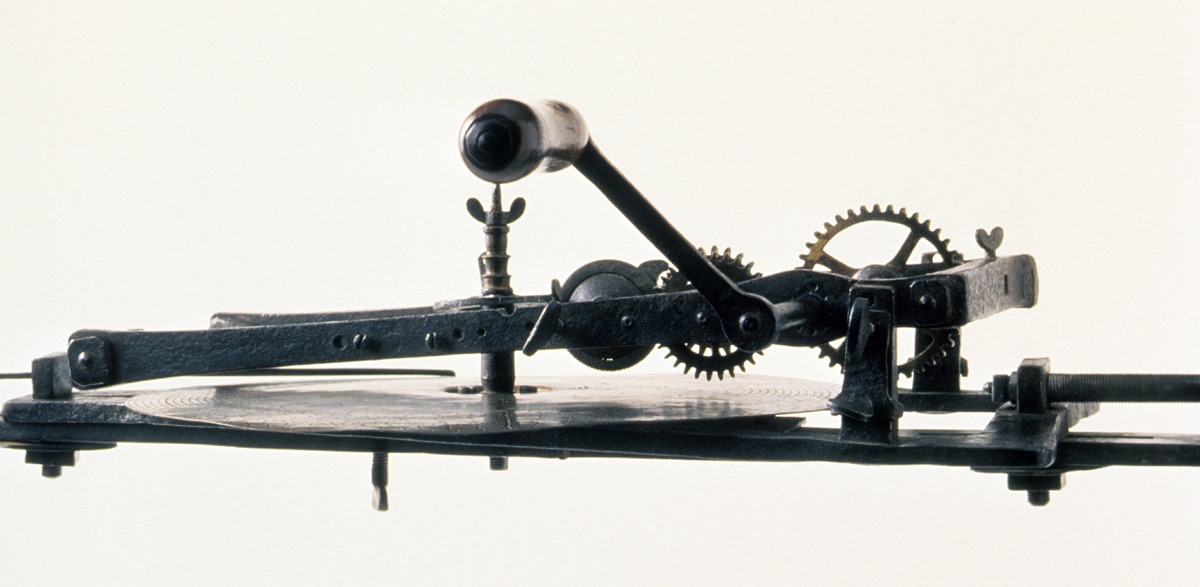Engine (clockmaker's or wheel-cutting)
In the eighteenth century, the word engine generically referred to any kind of mechanical device; in this case, it means a portable, hand-cranked contraption designed to cut teeth on brass clock-wheel blanks. A great time-saver, the gear-cutting “engine” insured accurate indexing—the exact division and regular spacing of teeth on each gear. By eliminating the need to make individual cuts manually with a file, it facilitated the efficient production of gears in quantity.
Wheel-cutting engine, Nathaniel Dominy IV (maker or purchaser), 1774 - owned by that date crediting Samuel Sherril for the triangle base support, seen below. Iron; Steel; Brass; Soft maple. 27.6" (L0, 16.5" (W). Museum purchase with funds provided by Henry Belin du Pont, 1957.0026.409


